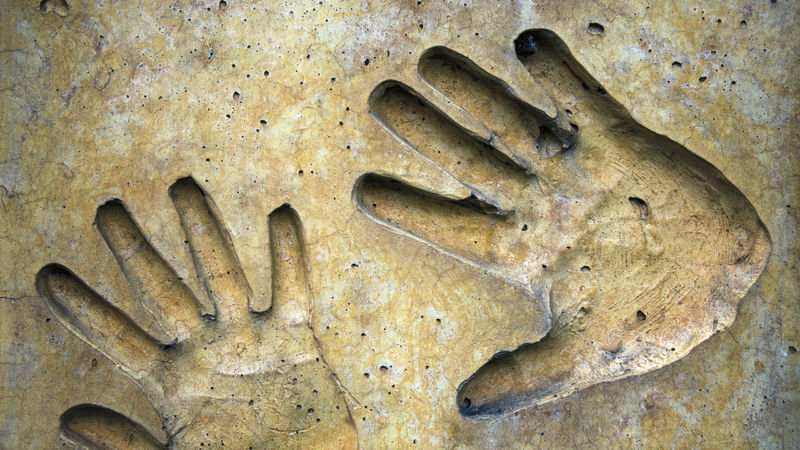In honor of July 30 being "World Day Against Trafficking in Persons", we take a look at how technology can help in the fight against this international scourge
Police in New Delhi, India used facial recognition technology in a program trial to identify 3,000 missing children in a four-day period a few years ago. This result — the identification of children who were vulnerable to human trafficking and child labor — demonstrates the power of technology to combat human trafficking.
While technology will never be the primary solution in stopping human trafficking all together nor rescuing victims because of the nuanced challenges around trust and other factors, it does allow law enforcement and human rights activists to increase the efficiency and effectiveness of prevention and rescue efforts.
Expanding trials of new emerging technology
Between 15,000 and 50,000 women and children are forced into sexual slavery in the US every year, according to deliveryfund.org; and the US Department of Health & Human Services estimates the total number of victims stands at 240,000 to 325,000.
After learning of the use of facial recognition to identify missing children in India noted above, Moms in Security, a nonprofit organization dedicated to supporting rescue efforts of children and young adults who may be being trafficked, saw an opportunity to leverage new technology, products, and services to better facilitate rescue missions. Co-founder Elisa Mula, a child safety advocate and physical security technology expert, sought donations from manufacturers and developers of tools and technology that included software licenses and small surveillance tools, Then, the group put these donations into the hands of those law enforcement and justice advocates who were conducting human trafficking rescue missions.
Working within the law enforcement procurement process can be very bureaucratic, Mula says, adding that when she first started her efforts, the investigative needs of a rescue would change, or newer and better technology would come on the market before the approval of the older technology occurred. It was a very frustrating process.
However, Mula’s determination to seek work-arounds led to a partnership with an attorney, who is an expert in navigating the procurement bureaucracy, and resulted in the establishment of public-private partnerships to enable these donations.
Moms in Security is utilizing its scale and expertise to increase access to education and highlight signs to watch out for in at-risk young adults who could fall victim to human traffickers. For example, Mula is using her digital expertise to create online courses and outreach based on in-person training she completed years ago. Her intention is to make these courses accessible to professionals at every K-12 and higher education institution and school community, including teachers and parents.
Moms in Security also partners with student groups, which act as intermediaries between law enforcement and at-risk students by providing confidentiality and advising potential victims on where to get legal help and resources.
Using blockchain to track goods and services
Blockchain is another technology that is being increasingly used to combat human trafficking. As part of corporations’ environmental, social & governance (ESG) strategies, those organizations that manufacture goods across borders want to ensure the vendors they use as part of their supply chains are avoiding human rights violations, including human trafficking. These ESG requirements of third-party vendors include providing employees with good working conditions, avoiding the use of child labor, and compensating workers at fair market rates.
Blockchain technology — which provides a shared, transparent, digital ledger of transactions — enables the tracking of goods from their original source to their final destination and can also be used to identify human trafficking risks. Indeed, with global companies having thousands of suppliers across continents, tracking supply chains is not an easy task.
In fact, many people and organizations still don’t realize the pervasiveness of the human trafficking problem in the US, which occurs in in all regions and neighborhoods — from the inner city to middle class suburbia throughout the US every day. Yet, even with awareness of the problem, many outsiders don’t understand the nuance and intense efforts required to establish fragile trust with victims that is necessary to rescue victims from these horrible situations. Often, it is the intense advocacy and tireless efforts of a family member to help address critical access to justice issues, bringing law enforcement to the table and gathering the right mix of guidance and support to rescue the victim.
One of the key challenges in the use of technology is the collection and security of personally identifiable information. It is incredibly important that any information collected remains in the control of the victim of human trafficking to mitigate the risk of it falling into the wrong hands, says Maya Markovich, co-founder of the Justice Technology Association. Again, this is where technology can help by having state of the art security to make sure victims’ information is used for the exclusive purpose of human trafficking disruption, rescues, and prosecution.
Luckily, we have dedicated nonprofits, advocates, and law enforcement professionals as part of the human trafficking support ecosystem working hard to disrupt trafficking networks, arrest and prosecute the traffickers, and save current victims and at-risk individuals from falling into the clutches of human traffickers in the first place.







